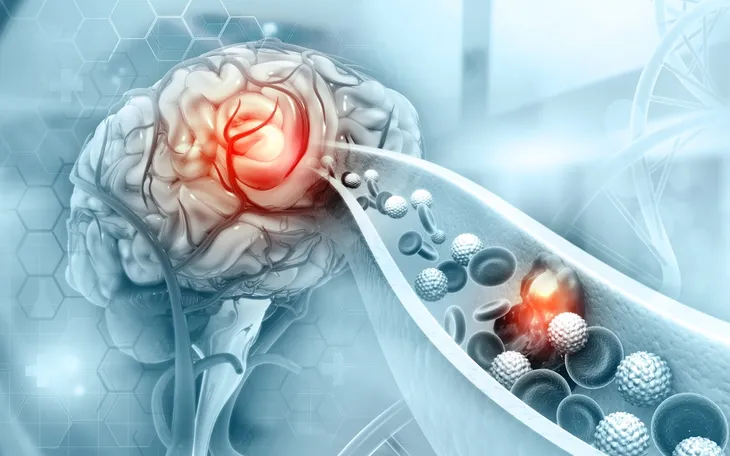- Heart disease is a term that refers to several conditions that affect your heart, blood vessels, or both.
- Though both men and women are born with a cardiovascular system, there are some notable differences that can affect how men and women experience heart disease.
- The signs of heart disease can differ in men and women too so it’s important to get informed.
It’s a common misconception that heart disease mostly affects men. But the fact is, almost as many women as men pass away each year due to heart disease. Heart disease can also affect women of all ages and ethnicities. Yet, many women don’t realize they’re at risk.
The best way to protect your health is by getting informed. Follow along as we take a look at everything you need to know about heart disease in women, including the early warning signs, how it differs in men and women, the risk factors, and what you can do today to protect your heart.
What Is Heart Disease?
Heart disease, also known as cardiovascular disease, is a term that refers to several conditions that affect your heart, blood vessels, or both. Some of these include coronary artery disease, peripheral artery disease, heart attack, arrhythmia, congestive heart failure, coronary vasospasm, and coronary microvascular disease.
Heart disease can develop slowly over time, quickly after a heart attack, or it may develop from structural problems with the heart before birth (known as congenital heart disease). According to the Centers for Disease Control and Prevention (CDC), 1 in 16 women aged 20 and older have coronary heart disease, however, your risk greatly increases as you grow older. In fact, the CDC says that heart disease is the leading cause of fatality in women in the U.S.
Why Heart Disease Is a Serious Risk for Women
The Cleveland Clinic points out that many women don’t realize they are at greater risk of heart disease than breast cancer.. Though breast cancer is still a risk, and it’s important to stay informed, the source says women are seven times more likely to pass away from heart disease than breast cancer. So why is heart disease a serious risk?
Heart disease is a serious risk because many women tend to brush it off as a disease that mostly affects men. This can prevent women from taking steps to reduce their risk. It simply comes down to being uninformed.
How the Cardiovascular System Differs in Men and Women
Though both men and women are born with a cardiovascular system, the Cleveland Clinic says there are some notable differences that can affect how men and women experience heart disease. For starters, the source says the anatomy is different, in that women have smaller blood vessels and heart chambers. The walls of the ventricles are also thinner in women.
Additionally, women have fewer red blood cells, which means women can’t carry as much oxygen. The source also notes that women are more likely to have sudden drops in blood pressure and the hormones women produce can also impact heart health.
Early Warning Signs of Heart Disease in Women
Heart disease may not present any symptoms until there is a medical emergency (such as a heart attack). However, Healthline points out that early symptoms do exist and it’s important to be on the lookout.
Some potential early warning signs of heart disease in women include chest pain or discomfort (known as angina) and unusual fatigue. You may also develop pain in the neck, jaw, throat, upper stomach, or upper back. You should also be on the lookout for signs of weakness, shortness of breath, sweating, and a change in skin color. These symptoms (especially if experienced together) can also be a sign of a heart attack which is a medical emergency.
Why Women Often Miss the Signs of a Heart Attack
Though men and women can both have heart attacks, women are more likely to pass away from one than men. This may come down to recognizing the symptoms.
Though women can experience the same telling signs of a heart attack as men, such as chest pain, Johns Hopkins Medicine says women are more likely to experience atypical heart attack symptoms. Women also often brush these atypical symptoms off as non-life threatening and may think they’re not related to the heart but caused by acid reflux, the flu, or even stress. Unfortunately, this can have life-threatening consequences.
Signs and Symptoms of a Heart Attack in Women
The most common signs of a heart attack are chest pain, pain in the neck, arms, or jaw, as well as shortness of breath. However, as mentioned, women often experience unique symptoms that can be brushed off.
Symptoms unique to women include dizziness, pain between shoulder blades, nausea, and indigestion or gas-like pain. It’s also common for women to experience unexplained fatigue or sleep disturbances during a heart attack too. While these symptoms can be signs of other health problems, it’s not worth the risk to wait around. If you develop any symptoms of a heart attack, go to your local ER or call 911. Time is of the essence and the sooner you get medical help, the greater chance of a better outcome.
What Causes Heart Disease in Women?
According to the CDC, high blood pressure, high LDL cholesterol (bad cholesterol), and smoking are the top risk factors for heart disease. And the source says almost half of the American population has at least one of these risk factors.
Heart disease can also be congenital, meaning it’s caused by a birth defect that affects how the heart is formed. Genetics may also play a role, meaning if you have a family history of heart disease you may have an increased risk. Other medical conditions and lifestyle factors may increase your risk too. Let’s look at these next!
Other Risk Factors of Heart Disease
According to the Mayo Clinic, women with diabetes are more likely to develop heart disease than men with diabetes. The source also points out that diabetes can alter how you feel pain, which can increase your risk of a silent heart attack.
Chronic stress and depression may also increase your risk of heart disease. Additionally, the source points out that depression may decrease your ability to lead a healthy lifestyle. Pregnancy, menopause, and inflammatory diseases are also risk factors for women. Finally, lifestyle factors like being sedentary, eating an unhealthy diet, drinking too much alcohol, and being overweight or obese can also increase your risk of heart disease.
Heart Disease Complications
Whether you’re 20 or 80, heart disease should be taken seriously. All women should learn the risk factors of heart disease, but it’s even more vital for women with a family history. Taking preventive measures now may help decrease your risk in the future.
Additionally, heart disease can lead to other complications like heart attack, cardiac arrest, heart failure, stroke, or an aneurysm. All the more reason to get informed. Be sure to pay close attention to risk factors and learn the warning signs of heart disease to protect your heart health.
When to See a Doctor
If you notice any signs of heart disease contact your doctor for a proper diagnosis. If you suspect a heart attack, dial 911 or head to your local emergency room right away. But if you haven’t noticed any signs, it’s still a good idea to talk to your doctor to discuss your risk of heart disease. Early intervention is key!
If your doctor suspects you have heart disease they’ll likely order a variety of tests to confirm a diagnosis. The Mayo Clinic says these may include blood tests, an electrocardiogram, an echocardiogram, a heart computed tomography (CT) scan, or a heart magnetic resonance imaging (MRI) scan. They may also request a stress test, exercise test, or Holter monitoring. The bottom line is that it’s never too early to discuss your heart health with your doctor.
How Is Heart Disease Treated in Women?
Once you’ve been diagnosed with heart disease, your medical team will come up with an effective treatment plan. The Mayo Clinic says treatment in men and women is often similar and typically involves medication. Surgery may also be necessary. This may include angioplasty and stenting which involves inserting a stent (a short wire-mesh tube), into an artery. The stent is permanent and has an important job of allowing blood to flow more freely.
Another surgery option is a coronary bypass. This is a procedure that aims to restore blood flow to an obstructed coronary artery. Your treatment plan may also involve lifestyle adjustments.
How Can Women Reduce Their Risk of Heart Disease?
According to the CDC, women can reduce their risk of heart disease by monitoring their blood pressure. High blood pressure doesn’t typically produce symptoms so it’s important to have it checked regularly. You should also be screened for diabetes as uncontrolled diabetes can increase your risk of heart disease.
If you smoke, it’s time to quit and if you don’t, don’t start. Quitting isn’t always easy but your doctor can provide resources to help you along the way. The source also notes that it’s important to reduce your alcohol intake to no more than one per day, eat a heart-healthy diet, and manage a healthy weight. Learning to manage your stress can also help you reduce your risk of heart disease. Talk to your doctor to find out more ways you can protect your heart.















